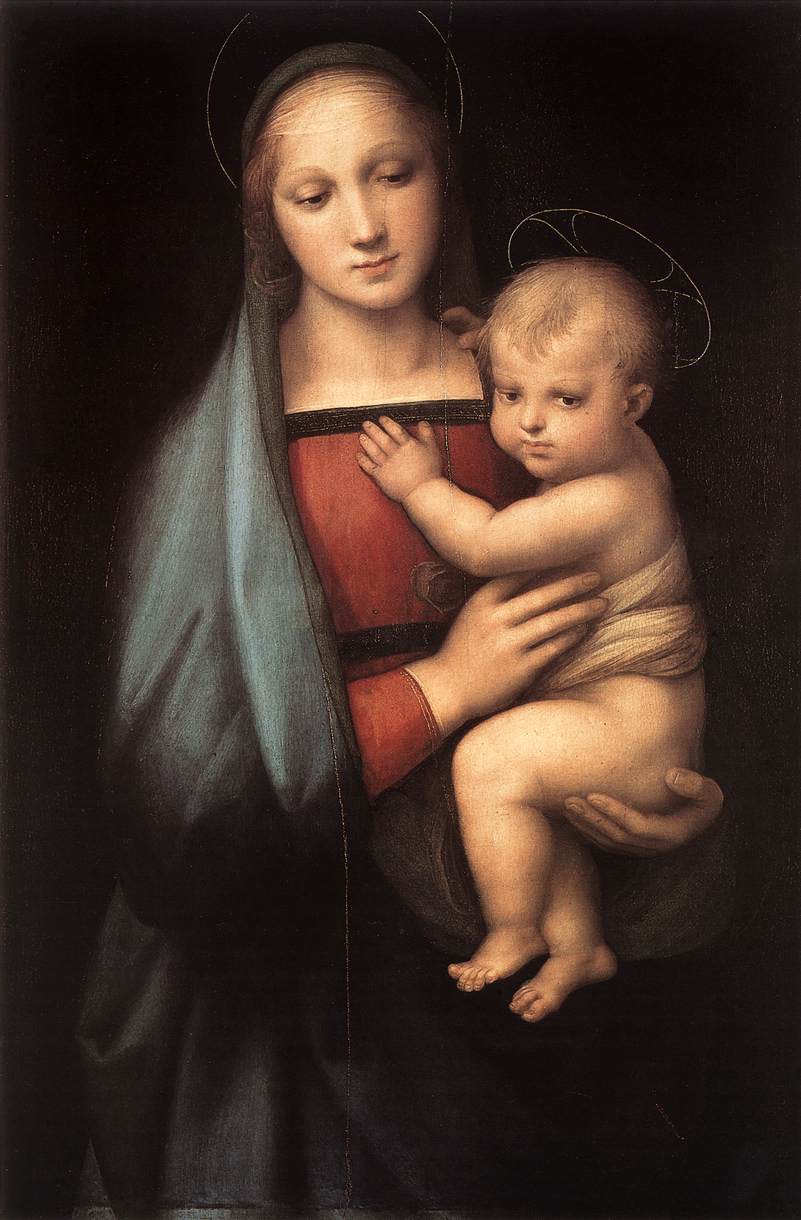The Grand Duke's Madonna
Story
The Madonna del Granduca (1504) in the Pitti Gallery in Florence shows the pre-eminent influence of Leonardo. Its simple composition is a prototype for the future Madonnas of Raphael's last Florentine period. The figures of the Virgin and Child emerge from a dark background (an element evidently derived from Leonardo), bound together by a sweet sentiment which derives largely from the gesture of the Child who, while looking toward the spectator, presses against his Mother The painting belonged to the 17th century Florentine painter, Carlo Dolci, and then to Grand Duke Ferdinand III of Lorraine from whom its name derives.
In spite of the fact that this painting is in part changed by the drastic nineteenth century restoration which included the repainting of the background and of the dress, it has still remained one of the finest creations of Raphael in his early period, at the time, when having come to Florence after his first formation under Perugino, he became acquainted with Florentine art at the beginning of the Cinquecento; and as is clearly seen in this work, was especially impressed by the painting of Leonardo. In the Madonna del Granduca both the Peruginesque and the Leonardesque influences are fused and assimilated by the young artist into a marvellous harmony which extends to the whole composition, from the spacing of the two figures in the space with that sense of flowing rhythm to the magic of the colour which softly dissolves into delicate shadow.
Raphael's greatest paintings seem so effortless that one does not usually connect them with the idea of hard and relentless work. To many he is simply the painter of sweet Madonnas which have become so well known as hardly to be appreciated as paintings any more. For Raphael's vision of the Holy Virgin has been adopted by subsequent generations in the same way as Michelangelo's conception of God the Father We see cheap reproductions of these works in humble dwellings, and we are apt to conclude that paintings with such a general appeal must surely be a little 'obvious'. In fact, their apparent simplicity is the fruit of deep thought, careful planning and immense artistic wisdom. A painting like Raphael's 'Madonna dell Granduca', is truly 'classical' in the sense that it has served countless generations as a standard of perfection in the same way as the works of Pheidias and Praxiteles. It needs no explanation. In this respect it is indeed 'obvious'. But, if we compare it with the countless representations of the same theme which preceded it, we feel that they have all been groping for the very simplicity that Raphael has attained. We can see what Raphael did owe to the calm beauty of Perugino's types, but what a difference there is between the rather empty regularity of the master and the fullness of life in the pupil! The way the Virgin's face is modeled and recedes into the shade, the way Raphael makes us feel the volume of the body wrapped in the freely flowing mantle, the firm and tender way in which she holds and supports the Christ Child - all this contributes to the effect of perfect poise. We feel that to change the group ever so slightly would upset the whole harmony. Yet there is nothing strained or sophisticated in the composition. It looks as if it could not be otherwise, and as if it had so existed from the beginning of time.
